 May 27, 2022 Oroville Recreation With Memorial Day – the unofficial start of summer – upon us, the Department of Water Resources (DWR) invites the public to take advantage of the many recreation opportunities at the State Water Project’s Oroville Thermalito Complex. Lake Oroville: The Spillway, Loafer Point, Bidwell Canyon, and Lime Saddle boat ramps are open 24-hours, seven days a week and car-top boat ramps are open from 8 a.m. to sunset. Both the Lime Saddle and Bidwell Canyon Marinas are open and provide boat rentals. Restrooms, potable water, and fish cleaning stations are not in service at the Spillway Boat Ramp area but portable toilets are provided – please plan visits accordingly. Thermalito Forebays and Afterbay: Visitors to the Thermalito North Forebay will find a full California Department of Parks and Recreation (CA Parks) facility with restrooms, picnic areas, a swim beach, and the Forebay Aquatic Center with kayaks, paddle boards, and other watercraft available for rent. Power boating is not allowed on the North Forebay but is permitted on the Thermalito South Forebay where the boat ramp area has a sandy beach, picnic tables, shade trees and vault toilets (no drinking water is available). The Monument Hill and Wilbur Road boat ramp areas on the Thermalito Afterbay are open as well as the Larkin Road car-top boat ramp. The Monument Hill facility provides boat ramp access, restrooms, a picnic area, and a swim beach. The Wilbur Road boat ramp has boat launch lanes and a vault toilet. Boaters on the Afterbay are reminded of the 5-mph speed limit north of the Highway 162 bridge and that access to the Afterbay is from 1.5 hours before sunrise to one hour after sunset. Oroville Wildlife Area: Primarily a primitive wildlife area managed for fishing, wildlife viewing and hunting, the Oroville Wildlife Area (OWA) is accessed primarily by boat on the Feather River, by area trails, or from developed and primitive roads off Highway 162, Highway 70, and Larkin Road. The Clay Pit State Vehicular Recreation area for Off-Highway Vehicles (OHVs), a CA Parks facility, is located south of the Oroville Airport and the clay used to build the core of Oroville Dam was excavated from this area. The OWA is administered for DWR by the California Department of Fish and Wildlife (CDFW) and information about the 11,000-acre Oroville Wildlife Area is available on the CDFW webpage. Lake Oroville Visitor Center and Area Trails: The Visitor Center is open to the public on Tuesdays, Wednesdays, and Thursdays from 9 a.m. to 5 p.m. where visitors can view educational exhibits, walk area trails, and climb the 47-foot-tall viewing tower. The Lake Oroville Trails Map, which shows more than 91 miles of trails available to equestrians, bicyclists, and hikers all around the facilities mentioned above, is available at the Visitor Center, at Lake Oroville State Recreation Area (LOSRA) kiosks, the Oroville Area Chamber of Commerce, or at the Feather River Recreation and Parks office. An interactive map of recreation facilities in DWR’s Oroville-Thermalito Complex is available on DWR’s Lake Oroville Recreation webpage at https://water.ca.gov/What-We-Do/Recreation/Lake-Oroville-Recreation. Visitors are encouraged to be fire smart, bring plenty of sunscreen, stay hydrated, avoid leaving valuables in visible areas, and be mindful of personal safety and the safety of those around you. 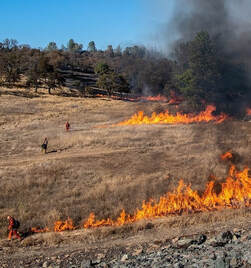 COLD WEATHER ALERT With the Memorial Day holiday and warm weather starting the summer months, DWR reminds those recreating in area lakes and rivers that waters are still very cold. The Feather River below Oroville Dam is around 55 to 60 degrees. While surface temperatures of Lake Oroville can be warmer, colder water is present only a few feet below the surface. Additionally, inflows from snowmelt are feeding the upper reaches of the Feather River’s forks where cold water shock can impair breathing and heart rate after a sudden immersion. Outdoor enthusiasts are encouraged to be mindful of water temperatures and wear a life jacket if near or on the water. For more information, visit the National Weather Service’s Safety webpage. PLUMAS NATIONAL FOREST Several recreation sites on the Plumas National Forest have opened, including on DWR’s Upper Feather Lakes of Lake Davis, Frenchman Lake, and Antelope Lake. Recreation facilities such as day use areas, beaches, and campgrounds, are managed by the U.S. Forest Service and their contractors. For information about recreation facility locations, amenities, and current conditions and restrictions, visit the Plumas National Forest webpage. 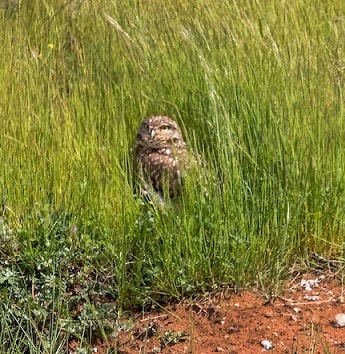 THERMALITO FOREBAY CONTROL BURNS A series of vegetation management burns around the Thermalito Forebay were conducted by CAL FIRE/Butte County Fire Department on May 27 in cooperation with the Department of Water Resources (DWR) and CA Parks. A total of about 60 acres near the Forebay Aquatic Center (~20 acres) and west of the Nelson Sports Complex (~40 acres) were successfully treated along with 30 acres of grassland at the Rabe Road Shooting Range south of Oroville Airport. An additional treatment of 185 acres is planned for the week of May 30 at South Forebay near Grand Avenue (~65 acres), and near Wilbur Road and Tres Vias Road (~120 acres). The vegetation management-controlled burns have multiple benefits for the natural environment and public safety. The grasslands around the Thermalito Forebay are home to many seasonal wetlands called vernal pools. Although vernal pools are only a small component of these grasslands, they support a high diversity of California native plants and animals, including rare and endangered species and species endemic to California (i.e., found nowhere else in the world). Fire from carefully controlled burns is the most powerful tool to combat invasive plants and dry invasive grass buildup called ‘thatch’ within these grasslands and vernal pools. Removal of invasive species allows native plants and animal species, such as fairy shrimp, to thrive. The burns will also remove dangerous fire fuels from grassland adjacent to private property and near high-use areas. CAL FIRE Battalion Chief Jason Dyer also noted that the projects allow firefighters to practice skills in a controlled environment. 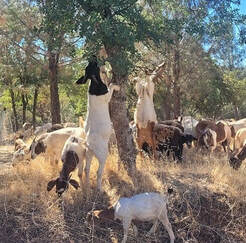 GRAZING EFFORTS REDUCE FIRE RISK Drivers along Canyon Drive from Royal Oaks Drive to Oroville Dam’s Upper Overlook Parking Area will see how grazing is used in DWR’s Fuel Load Management Plan to reduce wildfire risk, increase public safety, and enhance forest health in areas around Lake Oroville. For the next couple of weeks, goats and sheep will be visible along the hillside adjacent to the roadway. To increase the amount of vegetation removed, a mixture of goats and sheep are used by contractor Hanski Family Farms because the animals prefer different vegetation types. Goats prefer ladder fuels (shrubs, bushes, smaller trees, or tree branches near the ground) and sheep prefer grasses. When goats stand on their hind legs, they can reduce ladder fuels up to six feet high. DWR, in partnership with Butte County Fire Safe Council, continues to use grazing as a sustainable method of fuel reduction around DWR’s Oroville-Thermalito Complex, including Lake Oroville. To learn more, visit DWRs YouTube Channel for a video of the March 2021 Lakeland Boulevard goat grazing project on DWR’s YouTube webpage. CURRENT LAKE OPERATIONS The elevation of Oroville’s reservoir is about 776 feet elevation and storage is about 1.9 million acre-feet (MAF), which is 54 percent of its total capacity and 69 percent of historical average. Expect dry and temperatures in the mid-70s to 80s this weekend, increasing to the low- to mid-90s next week. The Feather River releases were increased last week and are currently at 2,700 cubic feet per second (cfs) to meet downstream Delta water quality and outflow needs. Flow in the low-flow channel through the City of Oroville is 650 cfs and flow through the Thermalito Afterbay Outlet is currently 2,050 cfs. Flows are assessed daily. The public can track precipitation, snow, reservoir levels, and more at the California Data Exchange Center at www.cdec.water.ca.gov. The Lake Oroville gage station is identified as “ORO”. All data as of midnight 5/26/2022  California is entering its third year of drought conditions. With water conservation now a way of life in California, everyone is encouraged to find ways to save water. See tips, tools, and ideas on the Save Our Water website. Information about real time local hydrological conditions, forecasts, and water conditions is available on DWR’s new website California Water Watch. 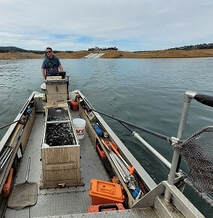 May 20, 2022 Inland Salmon Released into Lake Oroville California Department of Fish and Wildlife (CDFW) staff from the Feather River Fish Hatchery released 129,200 triploid fall-run “inland” Chinook fingerling salmon into Lake Oroville on May 12 at the Loafer Point Stage II Boat Ramp to support the recreational fishery. Of the 129,200 fish planted, 110,200 were direct release from the boat ramp and 19,000 fish were released into the main body of Lake Oroville from boats equipped with well holding tanks. This is the first year the fish were released into the main body of the lake to diversify and increase fishing opportunities. The inland Chinook measured about four to five inches in length and were raised at the Feather River Fish Hatchery. The fish are triploid, meaning unable to reproduce, which allows them to grow larger in size instead of putting energy into reproducing and it prevents any of these fish escaping Lake Oroville from hybridizing with sensitive downstream Chinook salmon populations. The Department of Water Resources (DWR) built, maintains, and funds the Feather River Fish Hatchery in partnership with CDFW staff who conduct fish spawning, rearing, and stocking activities at the hatchery. The Hatchery’s fish planting program has been in operation since 1968. A virtual tour of the Hatchery can be viewed on DWR’s YouTube channel and additional information can be found on the CDFW website. 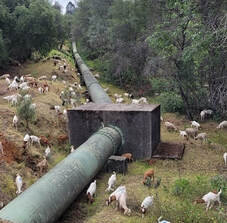 GRAZING EFFORTS REDUCE FIRE RISK Drivers traveling Oroville Dam Boulevard East below Oroville Dam have been treated to views of hundreds of goats and sheep grazing on nearly 35 acres along the Brad Freeman Trail, Hyatt Powerplant, and the Lower Overlook. Next week they will be moved to Canyon Drive where they will be grazing for the next couple of weeks along the hillside from Royal Oaks Drive to the Upper Overlook Parking Area. To increase the amount of vegetation removed, a mixture of goats and sheep are used by contractor Hanski Family Farms because the animals prefer different vegetation types. Goats prefer ladder fuels (shrubs, bushes, smaller trees, or tree branches near the ground) and sheep prefer grasses. When goats stand on their hind legs, they can reduce ladder fuels up to six feet high. The grazing project is part of DWR’s Fuel Load Management Plan, which helps reduce wildfire risk, increase public safety, and enhance forest health in areas around Lake Oroville. In partnership with Butte County Fire Safe Council, DWR continues to use grazing as a sustainable method of fuel reduction around DWR’s Oroville-Thermalito Complex, including Lake Oroville. To learn more and to see goat grazing in action, visit DWRs YouTube Channel for a video of the March 2021 Lakeland Boulevard goat grazing project on DWR’s YouTube webpage. 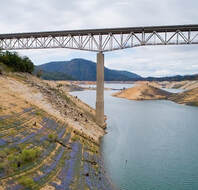 DROUGHT UPDATE Warming temperatures, along with the driest January through March on record, has left the statewide snowpack at 14 percent of average for this date despite the recent late season storms. The main benefit of late season storms will be to prevent soils from drying out early in the season, which can aid runoff efficiency of the remaining snowpack to the state’s reservoirs. Reservoir levels across California vary depending on their location and source of inflows but all are reflective of the state entering its third year of drought. Locally, record-setting precipitation from the late October 2021 atmospheric river (AR) storm fell mainly in the Feather River (Oroville Dam) and American River (Folsom Dam) watersheds, missing a large part of the Lake Shasta watershed. Lake Oroville currently has more storage than on this date last year and the Department of Water Resources (DWR) is working to preserve as much storage as possible for future needs to maintain Delta water quality, protect endangered species, and meet senior water right obligations. DWR is also administering a number of grant programs to help mitigate and address drought impacts. One program, the Small Community Drought Relief Program, has already awarded more than $33 million to local counties and cities around Oroville for projects such as water system improvements and connections in Orland, Berry Creek, and Williams and for water hauling in Butte, Glenn, and Colusa counties. The DWR hydrology team and a California Water Board data specialist held a media briefing with reporters and meteorologists May 10 to discuss the latest drought data points and where we stand in terms of current conditions. A recording of the briefing is available on the DWR YouTube webpage. As we enter the warmer months, everyone is encouraged to find ways to save water, because despite current reservoir levels, the state is going to have water challenges later this year. See tips, tools, and ideas on the Save Our Water website. Information about real time local hydrological conditions, forecasts, and water conditions is available on DWR’s new website California Water Watch. Visit DWR’s Drought webpage for the latest information. 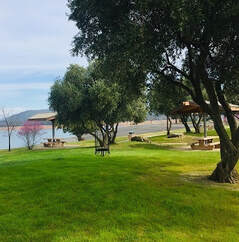 OROVILLE RECREATION The Spillway Boat Ramp opened on April 29, joining the open Loafer Point, Bidwell Canyon, and Lime Saddle boat ramps. The Foreman Creek and Stringtown cartop boat ramps are also open. Restrooms, potable water, and fish cleaning stations are not in service at the Spillway Boat Ramp area but portable toilets are provided – please plan visits accordingly. Information on current boat ramp status can be found on the California State Parks’ Lake Oroville State Recreation Area webpage. Scroll down to the link for “Current Launch Ramp Status”. Visitors to Oroville Dam and the Spillway Boat Ramp area will be able to use the newly constructed Lakeside Access Road which descends into the lake inundation zone before travelling back up to the Spillway Boat Ramp parking lot where they can access boat launch lanes, a shaded day use area with picnic tables, and multi-use trails suitable for hikers, bikers, and equestrians. The previous access road through the CHP screening booths and below the Emergency Spillway will only need to be used when lake elevations rise high enough to flood the new Lakeside Access Road. The Lake Oroville Visitor Center is open to the public on Tuesdays, Wednesdays, and Thursdays from 9 a.m. to 5 p.m. Pick up the Lake Oroville Trails Map, which shows more than 91 miles of trails available to equestrians, bicyclists, and hikers, at Lake Oroville State Recreation Area (LOSRA) kiosks, the Oroville Area Chamber of Commerce, and Feather River Recreation and Parks District. Visit the California Parks LOSRA webpage for current information on facility status and campground reservations. An interactive map of recreation facilities in DWR’s Oroville-Thermalito Complex is available on DWR’s Lake Oroville Recreation webpage. Information about the 11,000-acre Oroville Wildlife Area is available on the California Department of Fish and Wildlife webpage. CURRENT LAKE OPERATIONS The elevation of Oroville’s reservoir is about 776 feet elevation and storage is about 1.93 million acre-feet (MAF), which is 55 percent of its total capacity and 69 percent of historical average. Lake Oroville likely hit its peak storage for this Water Year on May 8 at 1.94 MAF, about 400,000 acre-feet higher than the peak in 2021. Expect dry and very warm temperatures over the weekend with forecasted temperatures increasing to the mid- to upper 90s into next week. The Feather River releases are at 2,200 cfs to meet downstream Delta water quality and outflow needs. Flow in the low-flow channel through the City of Oroville is 650 cfs and flow through the Thermalito Afterbay Outlet is currently 1,550 cfs. Flows are assessed daily. The public can track precipitation, snow, reservoir levels, and more at the California Data Exchange Center at www.cdec.water.ca.gov. The Lake Oroville gage station is identified as “ORO”. All data as of midnight 5/19/2022  California is entering its third year of drought conditions. With water conservation now a way of life in California, everyone is encouraged to find ways to save water. See tips, tools, and ideas on the Save Our Water website. Information about real time local hydrological conditions, forecasts, and water conditions is available on DWR’s new website California Water Watch. 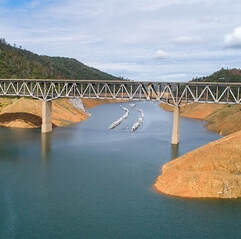 May 13, 2022 Drought Update California has experienced the driest January through March on record, leaving the statewide snowpack at 23 percent of average for this date despite the recent late season storms. The main benefit of late season storms will be to prevent soils from drying out early in the season, which can aid runoff efficiency of the remaining snowpack to the state’s reservoirs. Reservoir levels across California vary depending on their location and source of inflows but all are reflective of the state entering its third year of drought. Locally, record-setting precipitation from the late October 2021 atmospheric river (AR) storm fell mainly in the Feather River (Oroville Dam) and American River (Folsom Dam) watersheds, missing a large part of the Lake Shasta watershed. Lake Oroville currently has more storage than on this date last year and the Department of Water Resources (DWR) is working to preserve as much storage as possible for future needs to maintain Delta water quality, protect endangered species, and meet senior water right obligations. DWR is also administering a number of grant programs to help mitigate and address drought impacts. One program, the Small Community Drought Relief Program, has already awarded more than $33 million to local counties and cities around Oroville for projects such as water system improvements and connections in Orland, Berry Creek, and Williams and for water hauling in Butte, Glenn, and Colusa counties. The DWR hydrology team and a California Water Board data specialist held a media briefing with reporters and meteorologists Tuesday to discuss the latest drought data points and where we stand in terms of current conditions. A recording of the briefing is available on the DWR YouTube webpage. As we enter the warmer months, everyone is encouraged to find ways to save water, because despite current reservoir levels, the state is going to have water challenges later this year. See tips, tools, and ideas on the Save Our Water website. Information about real time local hydrological conditions, forecasts, and water conditions is available on DWR’s new website California Water Watch. Visit DWR’s Drought webpage for the latest information. 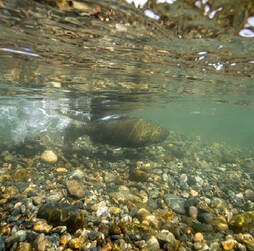 COLLABORATING TO SUPPORT SALMON Managing California's water needs during our severe drought means minimizing impacts on our environment while also meeting the health and safety, economic, and agriculture needs of our communities. The Department of Water Resources (DWR) and Department of Fish and Wildlife (CDFW) are actively working to respond to drought and climate change impacts posing challenges to our native species and ecosystems, including California’s salmon populations. Scientists and fish biologists from both DWR and CDFW have a long history of working together and collaborating with federal, state, local, non-governmental, tribal, and academic partners who have joined forces to protect and support California’s salmon populations. Collaborating through shared projects, funding, and research efforts, DWR and CDFW are identifying critical challenges facing salmon and using the best available science and technology to find ways to promote salmon health and survival. The state has embarked on dozens of projects to ensure the success of California’s salmon population. Some of these projects are highlighted in the recent DWR-CDFW news release. These projects include restoring critical habitat for salmon and other fish species, improving salmon migration corridors to and from the ocean, and increasing our monitoring efforts so we can better track the status of populations and devise new strategies to improve their status. View the latest video on the DWR YouTube channel. To learn more about collaborative projects protecting our salmon populations, check out the DWR website highlighting these efforts and more. Additional projects will be featured throughout the summer. 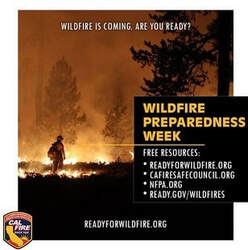 WILDFIRE PREPAREDNESS WEEK RECAP California Governor Gavin Newsom recently proclaimed May 1 to May 7, 2022, as “Wildfire Preparedness Week”. With California experiencing some of the largest and most destructive fires over the last few years and lingering drought conditions leaving fuel moisture levels very low, the state is taking action to help make communities more resilient to wildfire and improve forest health. “I urge all Californians to take lifesaving steps to stay prepared, including making their homes more fire-resistant, creating defensible space, and developing a wildfire action plan well ahead of time” Governor Newsom said. CAL FIRE kicked off the week with educational events across the state to raise awareness on wildfire preparedness, including how state, federal, and local public safety organizations are preparing for the 2022 fire season. CAL FIRE stresses the importance of fuel reduction and vegetation management projects and ways the public can prepare for wildfire through making your home more fire resistant (home hardening), creating defensible space, and developing a wildfire action plan well ahead of time. DWR continues to prepare for wildfire around the Oroville-Thermalito Complex by implementing fuel reduction projects and creating defensible space around infrastructure and adjacent to residential communities. Through the use of grazing, brush removal, chipping, and controlled burns DWR with area partners including CAL FIRE, California Department of Parks and Recreation (CA Parks), Butte County Fire Safe Council (BCFSC) aim to reduce wildfire risk, increase public safety, and promote forest health. Currently, DWR in partnership with BCFSC and goats from Hanski Family Farms are grazing 35 acres along Oro Dam Blvd. East with the goal of reducing ladder fuels to help lessen the spread of a potential wildfire, protecting infrastructure and nearby communities. Californians are encouraged to join these wildfire preparedness efforts by taking actions now to protect your home and family. Develop your personalized plan by visiting https://plan.readyforwildfire.org/. 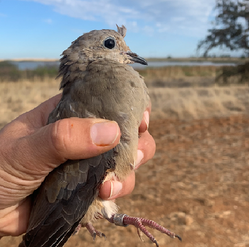 OROVILLE RECREATION The Spillway Boat Ramp opened on April 29, joining the open Loafer Point, Bidwell Canyon, and Lime Saddle boat ramps. The Foreman Creek and Stringtown cartop boat ramps are also open. Restrooms, potable water, and fish cleaning stations are not in service at the Spillway Boat Ramp area but portable toilets are provided – please plan visits accordingly. Information on current boat ramp status can be found on the California State Parks’ Lake Oroville State Recreation Area webpage. Scroll down to the link for “Current Launch Ramp Status”. Visitors to Oroville Dam and the Spillway Boat Ramp area will be able to use the newly constructed Lakeside Access Road which descends into the lake inundation zone before travelling back up to the Spillway Boat Ramp parking lot where they can access boat launch lanes, a shaded day use area with picnic tables, and multi-use trails suitable for hikers, bikers, and equestrians. The previous access road through the CHP screening booths and below the Emergency Spillway will only need to be used when lake elevations rise high enough to flood the new Lakeside Access Road. The Lake Oroville Visitor Center is open to the public on Tuesdays, Wednesdays, and Thursdays from 9 a.m. to 5 p.m. Pick up the Lake Oroville Trails Map, which shows more than 91 miles of trails available to equestrians, bicyclists, and hikers, at Lake Oroville State Recreation Area (LOSRA) kiosks, the Oroville Area Chamber of Commerce, and Feather River Recreation and Parks District. The Loafer Creek Recreation Area continues to be closed due to waterline repair (boat ramp and trail access allowed). Visit the California Parks LOSRA webpage for current information on facility status and campground reservations. An interactive map of recreation facilities in DWR’s Oroville-Thermalito Complex is available on DWR’s Lake Oroville Recreation webpage. Information about the 11,000-acre Oroville Wildlife Area is available on the California Department of Fish and Wildlife webpage. CURRENT LAKE OPERATIONS The elevation of Oroville’s reservoir is about 776 feet elevation and storage is about 1.93 million acre-feet, which is 55 percent of its total capacity and 70 percent of historical average. Lake Oroville likely hit its peak storage for this Water Year on May 8 at 1.94 million acre-feet (MAF), about 400 thousand acre-feet higher than the peak in 2021. Dry and warmer temperatures in the mid-to-upper-80s are forecast over the weekend and into next week. Average daily inflows this week have been in the range of 3,000 to 4,000 cubic feet per second (cfs) and are expected to be in this range or slightly lower over the coming week. The Feather River releases are at 2,200 cfs to meet downstream Delta water quality and outflow needs. Flow in the low-flow channel through the City of Oroville is 650 cfs and flow through the Thermalito Afterbay Outlet is currently 1,550 cfs. Flows are assessed daily. The public can track precipitation, snow, reservoir levels, and more at the California Data Exchange Center at www.cdec.water.ca.gov. The Lake Oroville gage station is identified as “ORO”. All data as of midnight 5/12/2022  California is entering its third year of drought conditions. With water conservation now a way of life in California, everyone is encouraged to find ways to save water. See tips, tools, and ideas on the Save Our Water website. Information about real time local hydrological conditions, forecasts, and water conditions is available on DWR’s new website California Water Watch. 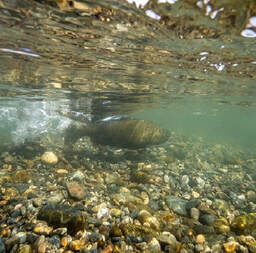 May 6, 2022 Collaborating to Support Salmon Managing California's water needs during our severe drought means minimizing impacts on our environment while also meeting the health and safety, economic, and agriculture needs of our communities. The Department of Water Resources (DWR) and Department of Fish and Wildlife (CDFW) are actively working to respond to drought and climate change impacts posing challenges to our native species and ecosystems, including California’s salmon populations. Scientists and fish biologists from both DWR and CDFW have a long history of working together and collaborating with federal, state, local, non-governmental, tribal, and academic partners who have joined forces to protect and support California’s salmon populations. Collaborating through shared projects, funding, and research efforts, DWR and CDFW are identifying critical challenges facing salmon and using the best available science and technology to find ways to promote salmon health and survival. The state has embarked on dozens of projects to ensure the success of California’s salmon population. Some of these projects are highlighted in the recent DWR-CDFW news release. These projects include restoring critical habitat for salmon and other fish species, improving salmon migration corridors to and from the ocean, and increasing our monitoring efforts so we can better track the status of populations and devise new strategies to improve their status. View the latest video on the DWR YouTube channel. To learn more about collaborative projects protecting our salmon populations, check out the DWR website highlighting these efforts and more. Additional projects will be featured throughout the summer. 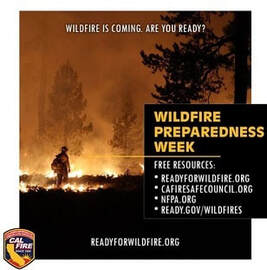 WILDFIRE PREPAREDNESS WEEK California Governor Gavin Newsom has proclaimed May 1 to May 7, 2022, as “Wildfire Preparedness Week”. With California experiencing some of the largest and most destructive fires over the last few years and lingering drought conditions leaving fuel moisture levels very low, the state is taking action to help make communities more resilient to wildfire and improve forest health. “I urge all Californians to take lifesaving steps to stay prepared, including making their homes more fire-resistant, creating defensible space, and developing a wildfire action plan well ahead of time” Governor Newsom said. CAL FIRE kicked off the week with educational events across the state to raise awareness on wildfire preparedness, including how state, federal, and local public safety organizations are preparing for the 2022 fire season. CAL FIRE stresses the importance of fuel reduction and vegetation management projects and ways the public can prepare for wildfire through making your home more fire resistant (home hardening), creating defensible space, and developing a wildfire action plan well ahead of time. DWR continues to prepare for wildfire around the Oroville-Thermalito Complex by implementing fuel reduction projects and creating defensible space around infrastructure and adjacent to residential communities. Through the use of grazing, brush removal, chipping, and controlled burns DWR with area partners including CAL FIRE, California Department of Parks and Recreation (CA Parks), Butte County Fire Safe Council (BCFSC) aim to reduce wildfire risk, increase public safety, and promote forest health. Currently, DWR in partnership with BCFSC and goats from Hanski Family Farms are grazing 35 acres along Oro Dam Blvd. East with the goal of reducing ladder fuels to help lessen the spread of a potential wildfire, protecting infrastructure and nearby communities. Californians are encouraged to join these wildfire preparedness efforts by taking actions now to protect your home and family. Develop your personalized plan by visiting https://plan.readyforwildfire.org/. OROVILLE RECREATION ADVISORY COMMITTEE The Oroville Recreation Advisory Committee met today, May 6 at the Southside Community Center in Oroville. ORAC was established by the Federal Energy Regulatory Commission (FERC) to review and provide recommendations regarding DWR’s recreation plan for the Project No. 2100 – Oroville Facilities. The 13-member committee is made up of representatives from state and local government, sports and recreation groups, and business and community organizations. To obtain a summary of the meeting, send a request to [email protected]. 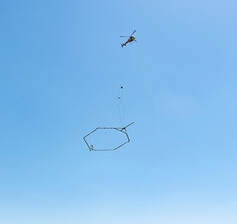 MAPPING STATE’S GROUNDWATER BASINS DWR is conducting an innovative, helicopter-based technology of airborne electromagnetic (AEM) surveys to gather information about the state’s groundwater aquifer structure to support drought response and the implementation of the Sustainable Groundwater Management Act (SGMA). The AEM surveys are scheduled in groundwater basins within portions of Colusa, Butte, Glenn, Tehama, and Shasta counties during May. Survey data creates an image of the subsurface down to a depth of about 1,000 feet below ground surface and provides information about large-scale aquifer structures and geology. This information supports the implementation of local groundwater sustainability plans (GSPs), which can help local agencies sustainably manage groundwater during drought. DWR has a short 2-minute video about the AEM method, provided in both English and Spanish, as well as an AEM project website. DWR encourages residents to get involved in their local groundwater management activities and GSP implementation through your groundwater sustainability agency (GSA). Information about local GSAs can be found on the SGMA portal. 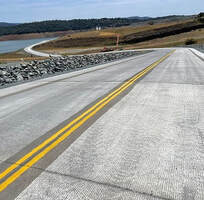 LAKESIDE ACCESS ROAD OPENS Visitors to the Spillway Boat Ramp and Day Use Area and nearby trails are now using the newly constructed Lakeside Access Road. The new, more direct road, which can be used when lake elevations are below 800 feet, begins from the Oroville Dam Crest Parking lot at the northwest of Oroville Dam. The new road descends into the lake inundation zone before travelling back up to the Spillway Boat Ramp parking lot. The previous access road through the CHP screening booths and below the Emergency Spillway will only need to be used when lake elevations rise high enough to flood the new Lakeside Access Road. Visitors are cautioned to be alert for continuing construction activities and to follow signage. 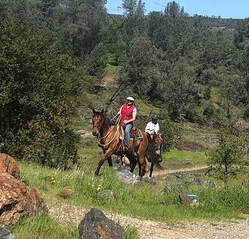 OROVILLE RECREATION The Spillway Boat Ramp opened on April 29, joining the open Loafer Point, Bidwell Canyon, and Lime Saddle boat ramps. The Foreman Creek and Stringtown cartop boat ramps are also open. Restrooms, potable water, and fish cleaning stations are not in service at the Spillway Boat Ramp area but portable toilets are provided – please plan visits accordingly. Information on current boat ramp status can be found on the California State Parks’ Lake Oroville State Recreation Area webpage. Scroll down to the link for “Current Launch Ramp Status”. The Lake Oroville Visitor Center is open to the public on Tuesdays, Wednesdays, and Thursdays from 9 a.m. to 5 p.m. Pick up the Lake Oroville Trails Map, which shows more than 91 miles of trails available to equestrians, bicyclists, and hikers, at Lake Oroville State Recreation Area (LOSRA) kiosks, the Oroville Area Chamber of Commerce, and Feather River Recreation and Parks District. The Loafer Creek Recreation Area continues to be closed due to waterline repair (boat ramp and trail access allowed). Visit the California Parks LOSRA webpage for current information on facility status and campground reservations. An interactive map of recreation facilities in DWR’s Oroville-Thermalito Complex is available on DWR’s Lake Oroville Recreation webpage. Information about the 11,000-acre Oroville Wildlife Area is available on the California Department of Fish and Wildlife webpage. CURRENT LAKE OPERATIONS The elevation of Oroville’s reservoir is about 776 feet elevation and storage is about 1.95 million acre-feet, which is 55 percent of its total capacity and 70 percent of historical average. Cooler temperatures in the mid-60s and low-70s are anticipated through the weekend and into next week with a chance of rain later in the weekend and into next week. Average daily inflows this week have been tapering off and have been in the range of 4,000 to 5,500 cubic feet per second (cfs) and will continue to taper off and are projected to be in the range 3,000 to 4,000 cfs. On Friday, May 6, 2022, flows to the Feather River were increased to 1,200 cfs to meet downstream Delta water quality and outflow needs. Flow in the low-flow channel through the City of Oroville is 650 cfs and flow through the Thermalito Afterbay Outlet is currently 550 cfs. Flows are assessed daily. The public can track precipitation, snow, reservoir levels, and more at the California Data Exchange Center at www.cdec.water.ca.gov. The Lake Oroville gage station is identified as “ORO”. All data as of midnight 5/6/2022  California is entering its third year of drought conditions. With water conservation now a way of life in California, everyone is encouraged to find ways to save water. See tips, tools, and ideas on the Save Our Water website. Information about real time local hydrological conditions, forecasts, and water conditions is available on DWR’s new website California Water Watch. |
Archives
October 2023
Categories
All
|
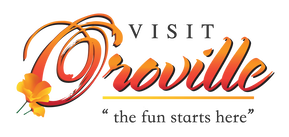
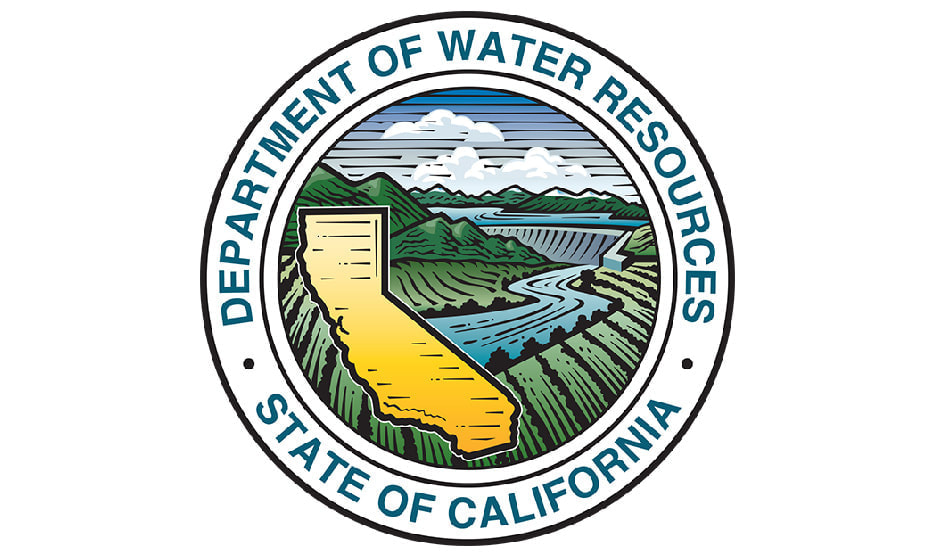
 RSS Feed
RSS Feed